
Playing eight of GOLF’s Top 100 Courses in eight days is every bit as exhilarating (and exhausting) as it sounds
The acrid smell of gasoline was the first inkling that perhaps this trip was a little too ambitious. We were at the deserted Whangarei Airport, in a remote corner of the North Island of New Zealand, trying to wedge our golf clubs into a tiny Piper Seneca while exchanging nervous glances. In planning maybe the greatest golf trip of all time with my old friends Kevin Price, Tom June and Matt Ginella (the travel editor at Golf Channel), we knew we were pushing the limits of human endurance and common sense, to say nothing of our credit cards. But none of us expected to be confronted with our mortality. Could this propeller plane really carry four wayward Yanks, our precious clubs, a peach-fuzzed pilot and enough fuel to fly us clear across New Zealand to the doorstep of Cape Kidnappers?
We were already fretting about that when Ginella peeked into the cabin.
“Why do I smell gas?” he asked, voice rising an octave or two.
Our pilot, who looked like he was about 25 and whom I had at first mistaken for a receptionist, responded, “It’s an old plane.” It was an enigmatic answer that did nothing to calm our nerves. The four of us huddled discreetly to discuss our options. We could risk death or we could bag the jaunt to Kidnappers — one of the most renowned courses in the Southern Hemisphere — and rejigger our itinerary. But that would mean missing out on a course ranked 44th in GOLF Magazine’s newly released 2020-21 World Top 100. We didn’t fly halfway around the world to lay up. In the end we crammed into the plane, because it had to be done. When we touched down two hours later — nerves frayed, bladders distended — our foursome cheered wildly, a release that was genuine and cathartic. Still, Ginella was shaken. “I’m beginning to rethink this itinerary,” he intoned gravely.
***
How do you play eight courses in the World Top 100 in the span of eight days? It begins with the naive belief that such a thing is possible. In various combinations Kevin, Tom, Matt and I have done Scotland, Ireland, Bandon, the Sand Hills of the Midwest, all eight courses at Pinehurst, Northern Michigan and sundry other road trips. The antipodes were the last frontier. For years we had been transfixed by digital golf porn of these exotic and highly photogenic courses on the edge of the world. With the Presidents Cup headed to Royal Melbourne, our date with destiny had arrived.
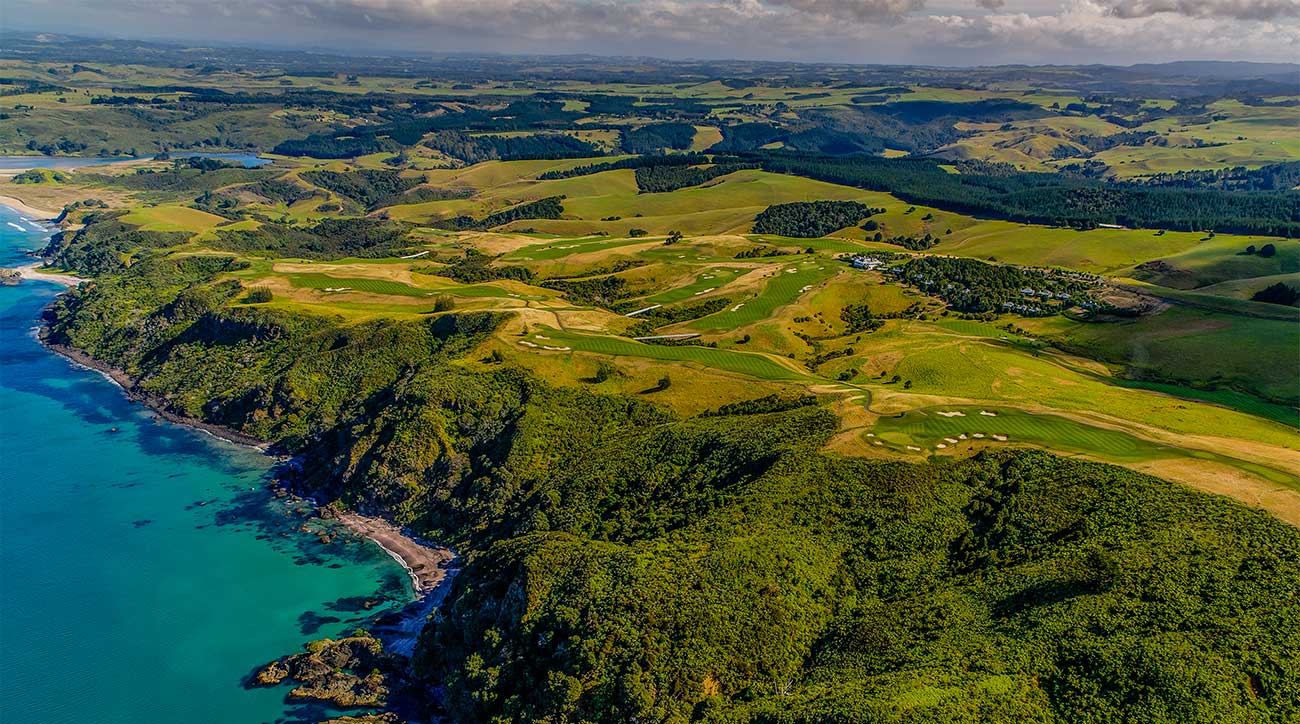
We spent months discussing versions of the trip: visiting Melbourne and other Sand Belt classics was a must. From there it’s an easy flight to Tasmania, where the Barnbougle resort is home to two of the most buzzed-about courses built this century. But if you’re flying from Melbourne to Tazzie you pass directly over King Island, with its cult favorites Cape Wickham and Ocean Dunes. That right there is a helluva trip, but how can you fly all the way to Australia and not play Alister MacKenzie’s Sydney classic, New South Wales Golf Club? Turns out, you can’t. And if you’re schlepping to Oz, aren’t you compelled to stop in New Zealand, too?
The wish list grew ever longer and more ornate, as it must. But because of wives, kids, jobs and other real-world inconveniences we needed to keep the trip as short as possible…while playing as much golf as possible. The logistics felt overwhelming.
Then the golf gods bestowed upon us an angel in the form of Frank Krieger. He is a jovial Southern Californian who happens to be close friends with my old college roommate. Frank runs the travel company Best of New Zealand Golf and is equally well-connected in Australia. It is an elegant service: Frank books flights, hotel rooms and tee times at a bulk rate, then puts together trips for vagabond golfers, who pay less than they would arranging it a la carte on their own, and Best of New Zealand Golf charges them nothing for its services.

Frank took our madcap idea and turned it into a reality: 11 rounds in eight days, requiring 13 different flights. “It’s not how we would usually build a trip,” he said with a chuckle. “Most golfers want some down downtime to, you know, rest and sightsee and enjoy all that New Zealand and Australia has to offer.”
“We’re not like those pansies,” I woofed.
“I respect the ambition,” Frank said, “if not the judgment.”
***
From Northern California, where Kevin and I live, it’s an easy trip to Auckland, 11 hours of flight time that is basically the same as traveling to Europe. If you’re a Star Alliance loyalist and wind up in the pointy end of the bird, well, Air New Zealand’s business class features the most comfortable sleeping arrangements imaginable, with a memory foam mattress atop the lay-flat bed.
I couldn’t have been more perky arriving at our first stop, Kauri Cliffs. The range there might be the prettiest on the planet, high on a hill with sweeping of views of Cape Brett and the Cavelli Islands, which evoke Thailand with dramatic rock outcroppings, blue lagoons and hidden beaches. Kauri is about as much fun as you can have on a golf course, a rollicking collection of risk-reward, infinity greens and carries over coastal inlets. Kauri is a public course but gets only 5,000 rounds a year. We were delighted to make it 5,004. There is a fantastic restaurant on-site and lovely cottages; we enjoyed the former but not the latter, as there was no time to linger.
From Kauri we drove 2.5 hours south, to Tara Iti. Those evocative words have been on the lips of many golfers ever since its stunning debut at No. 29 on GOLF’s 2017-18 Top 100, having opened only in 2016. (It now ranks 27th.) Of the celebrated New Zealand courses, Tara Iti is the most geographically accessible, only an hour drive north of Auckland. This latest masterwork from Tom Doak sprawls across heaving dunes and features one of his most inventive routings. The great holes just keep coming, many asking difficult questions, especially with greens that border on the extreme.
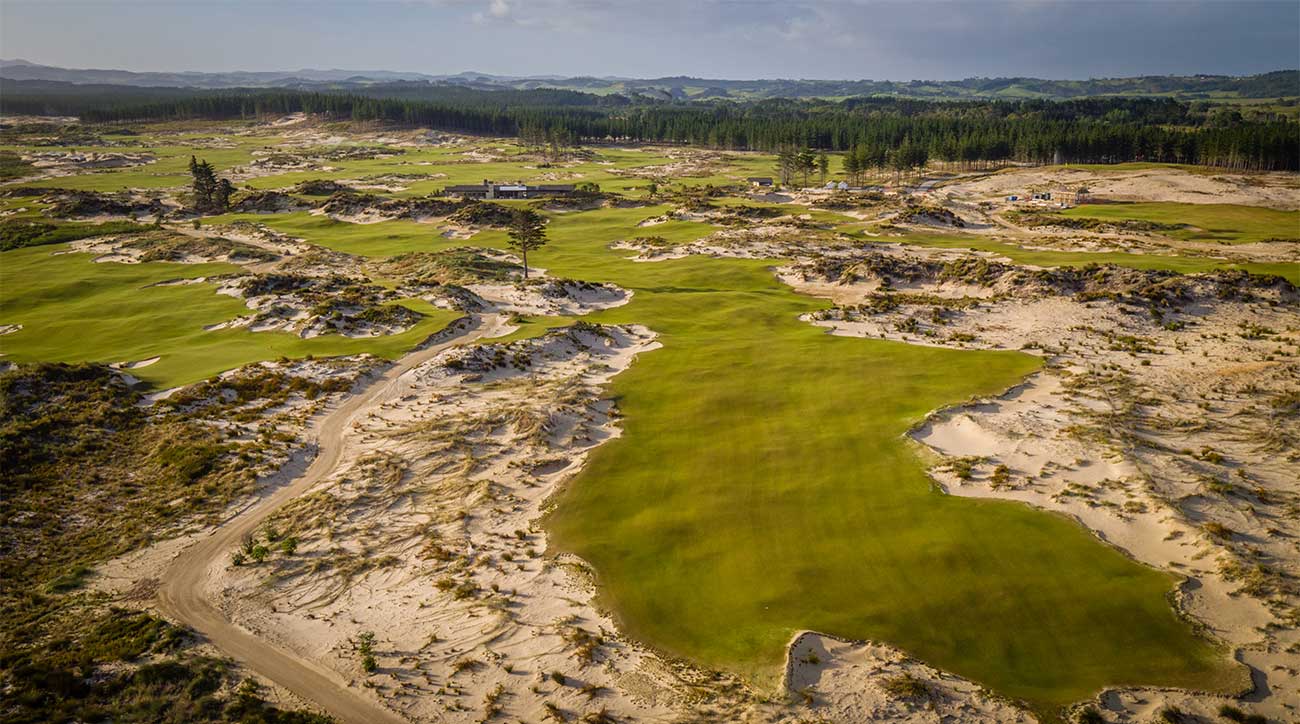
One of our caddies described Tara Iti as “for the 1% of the 1%.” Indeed, seated next to us at lunch was Craig Heatley, one of New Zealand’s most prominent citizens and a green jacket with a leadership role at the Masters. But the Tara Iti folks recognize they are stewards of a special place and will let non-members make one visit to play the course so long as they stay in one of the sleek on-site villas. The prices are Pebble-esque: around $1,400 a night for a two-bedroom villa, though it was spacious enough to accommodate all four of us. The greens fee is $600. Steep, to be sure, but at least there is access for the 99.9%, unlike at the top private clubs in the U.S. It might be prudent to wait a couple of years before making your visit: Tara Iti owns 7.5 miles of stunning coastline, and there are plans to build two more courses by the end of 2021, a second layout by Doak and the other courtesy of Coore-Crenshaw. “They will be our Pebble Beach and Spyglass,” says Jim Rohrstaff, one of Tara Iti’s founding partners. “This one”— the original 18 — “is our Cypress Point.”
Cape Kidnappers (No. 44) is at the other end of the North Island, easily an 8-hour drive from Tara Iti. Our overly ambitious itinerary had no room for such wasted time, which necessitated the hair-raising flight in the toy plane. (In fairness, no one ever really makes this journey, which forced us to wing it; a more sensible way to do it would be to spend a couple of days driving south, enjoying the stunning scenery and charming little towns.) The Kidnappers property includes a working farm and the whole place has a pleasantly rustic vibe, including the comfy cabins where we crashed for the night.
Like Kauri Cliffs, it’s owned by hedge fund billionaire Julian Robertson and is gloriously public. The course, also designed by Doak, features a front nine that criss-crosses interesting, hilly terrain and then the back nine plays along finger peninsulas. The aerial shots make these holes look like the most dramatic in all of golf but standing on them they’re rather flat and the jagged coastline is a gorgeous backdrop but not really in play. If you’re going to enjoy a longer stay in New Zealand — which could include cult classics like Paraparaumu Beach and Titirangi, stunning new Jacks Point and the classy Kinloch Club — then Kidnappers is a must-play, but otherwise it might not be worth the logistical challenges of getting there.
ADVERTISEMENT
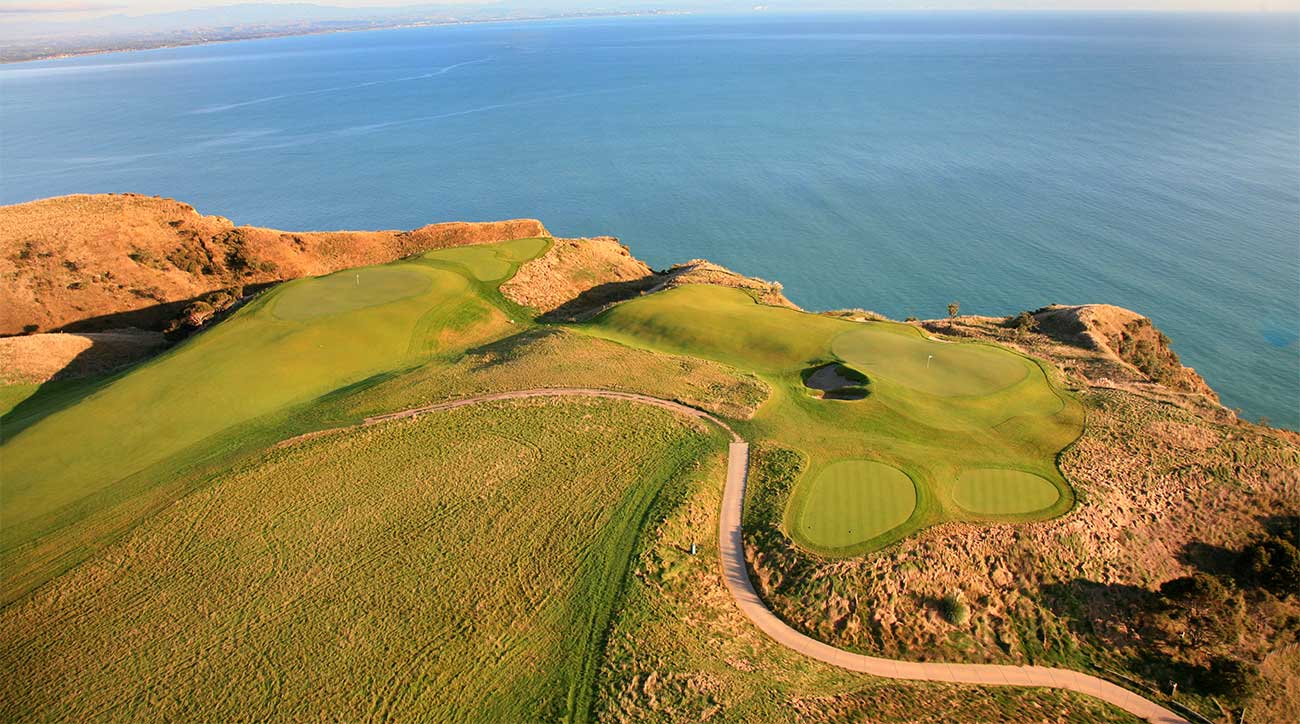
Barely 72 hours after arriving in New Zealand we had already blown out of the country, en route to Oz. While Melbourne’s Sand Belt has long been a premiere destination, Sydney is curiously lacking in leading courses beyond New South Wales GC. Two courses are often mournfully cited as having lost their architectural heritage: the Australian and Royal Sydney, though the latter has retained Gil Hanse to do a total restoration that should return Royal Sydney to its former glory. For now, the big-game hunter must decide if it’s worth it to make a detour to Sydney for one course. Our answer was a resounding yes. New South Wales (No. 46) is quite simply one of the grandest experiences in golf. I’m not sure I’ve ever played a course that demands so many heroic tee shots: over dunes, across canyons, through gaps in the hillocks, around camouflaged hazards. Awaiting are the incomparable green complexes of the good Dr. MacKenzie, with their graceful slopes and greedy bunkers. For sheer drama, the walk up the 5th fairway, which at its crest offers sweeping views of the coastline, rivals the reveal atop the 6th green at Pebble Beach. A famous do-or-die par-3 follows, with a carry over the crashing waves. To come to Australia and not play New South Wales would be a crime.
Sydney is a world-class city worthy of a long visit in its own right, but we were there for only 19 hours. Royal Melbourne’s West Course beckoned. It is the Augusta National of the Southern Hemisphere and in the new GOLF Top 100, where it ranks a stately No. 7, actually is two spots higher than the home of the Masters. The modern clubhouse seems like a non sequitur for a club founded in 1891 but inside is all manner of treasure: original hand drawings of the courses by MacKenzie; the clubs that honorary member Adam Scott used to win the 2013 Masters; photographs from the 2000 Presidents Cup; mementos from Australian Open victories by the likes of Gary Player and Greg Norman, and so much more.
For tournament play, Royal Melbourne uses a composite course that draws 12 or 13 holes from the West (depending on infrastructure demands) and the rest from the East, which is tighter and tougher and now sits at 97th in Golf’s Top 100. We didn’t have access to the composite routing but the West was a revelation. The wickedly sloping greens are the ultimate test, requiring precise and imaginative approaches, which must be set up by bold drives that leave you with the proper angles. Every hole is both a riddle and an opportunity. Some celebrated courses leave a bruise, but Royal Melbourne seduces and has you pining for more.
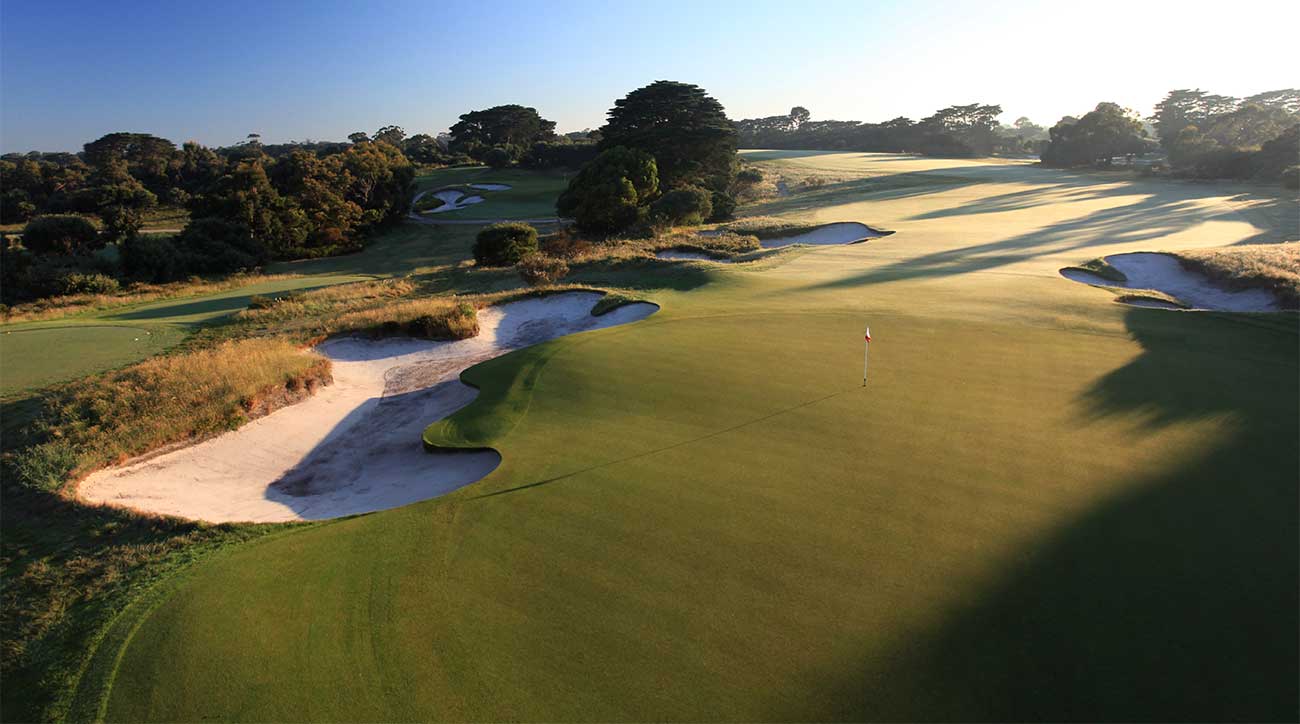
After repacking in the parking lot — an almighty mess that seemed to bother no one at a surprisingly chill club — we made the quick drive to Moorabbin Airport, a general aviation portal tucked into a quiet neighborhood. One of the most momentous decisions we made for this trip was to hire a charter plane for the King Island and Tasmania legs. There are commercial flights available to each island but the schedule is limited. By kicking in $1,600 each we got to play where we wanted when we wanted. It was glorious to live like a Tara Iti member. And unlike the tin can with wings that took us to Cape Kidnappers, the charter company, Air Adventure, came through with a big, swanky eight-person, Swiss-made prop plane that was an absolute rocket. We couldn’t have been more comfortable during the quick flight from Melbourne to King Island, though we were not entirely sure what awaited.
The biggest revelation of the trip, as it turns out. Cape Wickham (No. 62) absolutely blew our minds. It is the most visually spectacular course any of us had ever seen. Beyond that, it presents a seemingly endless series of great holes and heroic shots. At a place like Cape Wickham the ocean holes will always be the star — especially with an iconic 150-foot lighthouse looming — but the inland holes are just as bold, making use of towering sand dunes, rugged ridges and limestone outcroppings. The sandy loam is the ideal base for growing grass; Augusta National wishes its fairways are as pristine as Cape Wickham’s, and the greens are equally pure.
At trip’s end, Kevin, Tom, Matt and I would each rank of the courses we played and then share the results. Cape Wickham was a unanimous No. 1. It’s that good. Opened in 2015, the design collaboration between Mike DeVries, Australian golf commentator Darius Oliver and developer Duncan Andrews now stands as one of the game’s ultimate, if unsung, pilgrimages.
King Island is a charming place, a tiny speck with only 1,500 humans, just as many wallabies and many more cows; the island is renowned for its beef and dairy and we ate like kings during our brief stay. Remarkably, it boasts another must-play course, Ocean Dunes, which features a ripping start along the ocean and a whimsical back-nine up, down and around vertiginous dunes. There are so many fun and wild holes here. I also loved the course’s scruffy, low-key charm. Almost anywhere else on the planet Ocean Dunes would be the featured attraction.
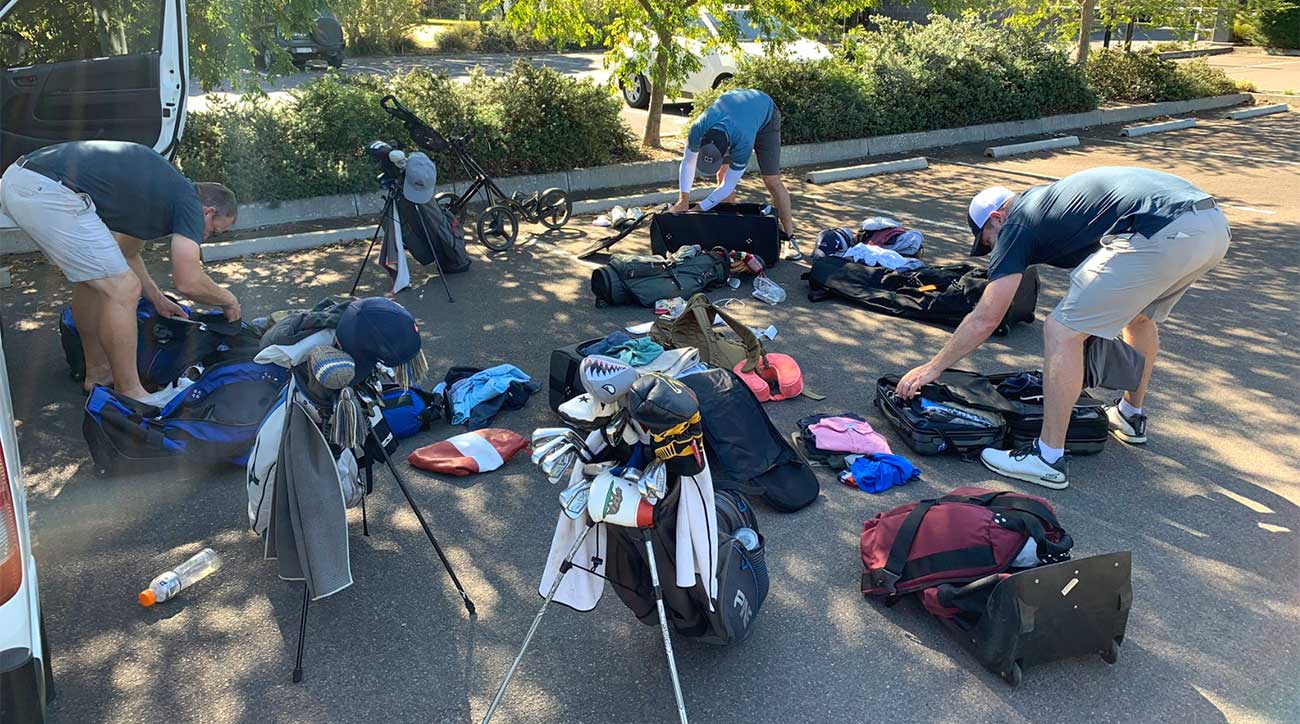
After our double-dip on King Island we raced to the airport. Barnbougle has a gravel runway on property but no landing lights, so we had to get there before dark or else would be diverted to the commercial airport an hour away. We made it just ahead of sunset, flying over the length of the two courses in a golden light. Now that the runway has been removed from the middle of the back nine at Teeth of the Dog, dropping in on Barnbougle might be golf’s grandest arrival. A resort van was waiting for us and minutes later we were seated for a hearty dinner. We were punch-drunk and giddy, knowing deep down that we weren’t worthy.
Barnbougle is the Bandon Dunes of Australia and, indeed, its patriarch Richard Sattler calls Mike Keiser a mentor. Sattler is a potato farmer who built golf courses on the dunes he owns only because the land was too wild for farming. The whole resort radiates his down-home sensibilities; when Sattler shows up on property he is often in muddy trousers, having come straight from the fields. But his two courses are neo-classics.
Barnbougle Dunes (No. 35), a collaboration between Doak and preeminent Aussie designer Michael Clayton, is a brawny layout that just keeps coming at you with bold holes tucked amidst the towering dunes. Lost Farm (No. 91), by Coore-Crenshaw, is an imaginative routing over incredibly varied terrain. It is endlessly fun and engaging. To play them both on the same day, as we did, is to marvel at the different character of courses built in such close proximity.
We rose before the sun for the last day of this epic trip, flying out of Barnbougle and back to Melbourne. From the airport we proceeded directly to Kingston Heath, which is near Royal Melbourne and often compared to it in the way that National and Shinnecock tend to occupy the same sentence. Royal, as it’s called locally, has more interesting terrain, but Kingston boasts some of the most awe-inspiring green complexes on the planet, plus gorgeous MacKenzie bunkering. It’s an exacting test but still a course you’d love to play every day.
ADVERTISEMENT
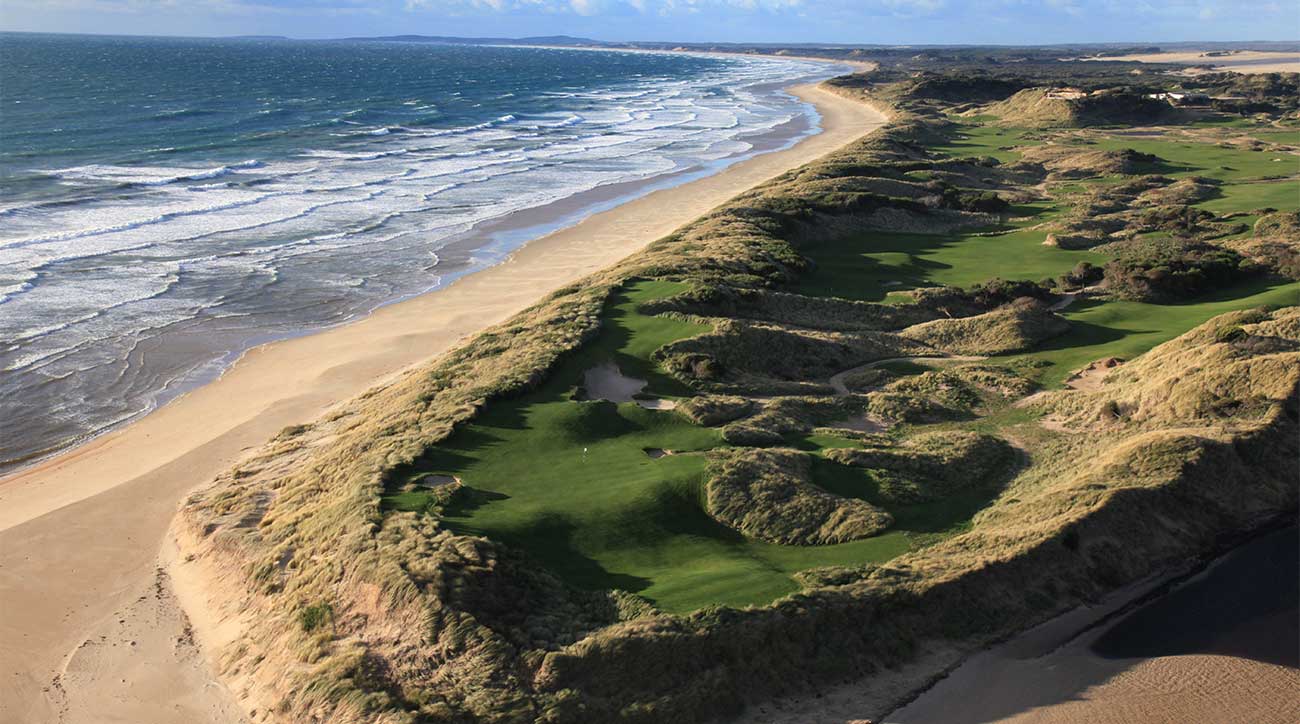
From Kingston Heath we made the short drive to Victoria Golf Club. Awaiting was an American flag flying in our honor and a statue of Aussie legend Peter Thomson, who began playing Victoria in the 1940s. You know you’re in for a treat from the very first hole, a come-hither par-4 of only 233 meters, aka 254 yards. (I was the only one of us to even eke out a par.) The Sand Belt is famous for the way the bunkering is carved into the greens and the edges at Victoria were so sharp you could get a paper cut.
Coming into this trip we knew the least about Victoria but all four of us fell under its spell. It has to be among the most underrated courses in golf. We finished at dark and stumbled into the clubhouse to a convivial welcome from the members enjoying their supper. There are 15 nicely updated rooms within the clubhouse and folks around Victoria are used to greeting visitors. We had so much fun talking golf courses with them that we all agreed that for a future, more rational trip Down Under, staying at Victoria would be the ideal home base, which would also allow exploration of more Sand Belt classics like Metropolitan and Yarra Yarra and day trips to the excellent courses on the Mornington Peninsula.
Over our last supper Kevin, Tom, Matt and I filled out our ballots. Here’s my order of preference from the trip; in parenthesis is where the course finished when we aggregated all of our rankings.
Cape Wickham (1)
New South Wales (4)
Royal Melbourne West (3)
Lost Farm (2)
Victoria (6)
Barnbougle Dunes (7)
Tara Iti (5)
Kauri Cliffs (9)
Ocean Dunes (10)
Kingston Heath (8)
Cape Kidnappers (11)
I’ve gone back and run a bunch of numbers with the godfather of our trip, Frank Krieger. The retail price of the exact trip we took is roughly $12,000 per man (that’s with premium economy seats for the long-haul flights, which feature good grub and excellent service), though we payed less thanks to media rates and the generosity of Air New Zealand and the New Zealand board of tourism.

But we blew it out, with the charter planes and staying at the swank lodges at Tara Iti and Cape Kidnappers. According to Frank, the exact same trip we took could be had for around $9,000 by flying only commercial, staying in more economical lodging and taking fewer caddies. (All the private clubs accept outside play; go to their individual websites for details. A letter of introduction from a PGA professional is preferred by most of them. If you’re not a member of a private club join the “men’s club” at a local public course and have that PGA pro advocate on your behalf.)
The most challenging logistical piece for us was getting around New Zealand. Kauri Cliffs and Cape Kidnappers are wonderful but both are remote and quite far away from each other. If you have to make tough decisions, you could cut both courses but still fly into Auckland for 24 hours to hit Tara Iti. That brings the price down to less than $7,000. Still, Tara Iti is a big ticket. If you’re willing to give that up, Frank can put together all the Australian courses we played for around $5K. It ain’t cheap, but a pilgrimage to Scotland or Ireland is comparable and the golf in Australia is just as good, if not better. It’s certainly more exotic.
Weeks after returning home, Kevin, Tom and Matt and I are still in a daze, humbled and grateful for all that we got to see and experience, even the poisonous snakes we encountered. The logistics were grueling at times, our golf was occasionally raggedy, but there is little doubt we’ll spend the rest of our days talking about it as the greatest trip we’ve ever taken. “Amazing how hard it’s been to recover from jet lag,” Tom texted me the other day. “The emotional recovery will take more time!”
To receive GOLF’s all-new newsletters, subscribe for free here.

